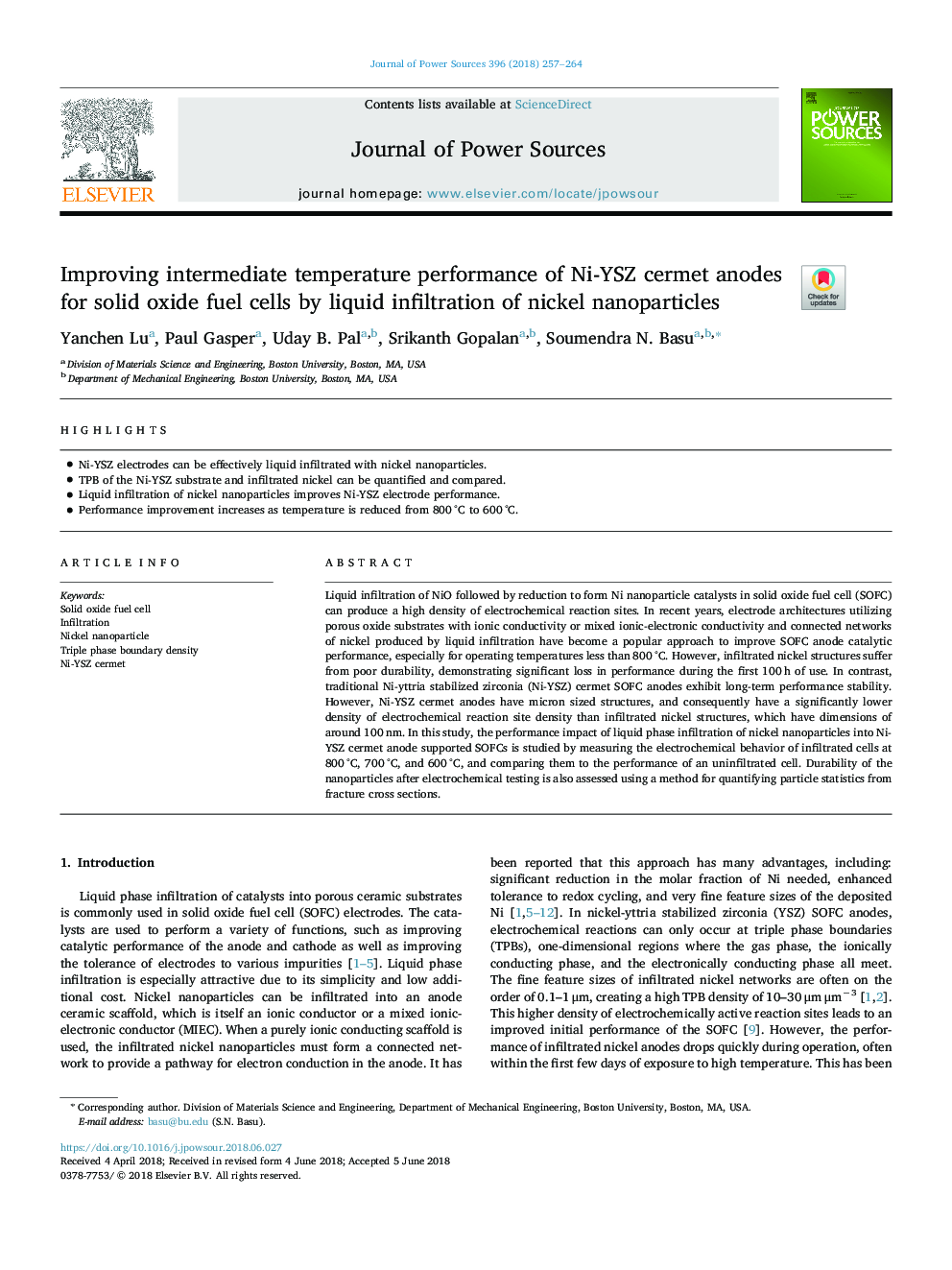| Article ID | Journal | Published Year | Pages | File Type |
|---|---|---|---|---|
| 7725058 | Journal of Power Sources | 2018 | 8 Pages |
Abstract
Liquid infiltration of NiO followed by reduction to form Ni nanoparticle catalysts in solid oxide fuel cell (SOFC) can produce a high density of electrochemical reaction sites. In recent years, electrode architectures utilizing porous oxide substrates with ionic conductivity or mixed ionic-electronic conductivity and connected networks of nickel produced by liquid infiltration have become a popular approach to improve SOFC anode catalytic performance, especially for operating temperatures less than 800â¯Â°C. However, infiltrated nickel structures suffer from poor durability, demonstrating significant loss in performance during the first 100â¯h of use. In contrast, traditional Ni-yttria stabilized zirconia (Ni-YSZ) cermet SOFC anodes exhibit long-term performance stability. However, Ni-YSZ cermet anodes have micron sized structures, and consequently have a significantly lower density of electrochemical reaction site density than infiltrated nickel structures, which have dimensions of around 100â¯nm. In this study, the performance impact of liquid phase infiltration of nickel nanoparticles into Ni-YSZ cermet anode supported SOFCs is studied by measuring the electrochemical behavior of infiltrated cells at 800â¯Â°C, 700â¯Â°C, and 600â¯Â°C, and comparing them to the performance of an uninfiltrated cell. Durability of the nanoparticles after electrochemical testing is also assessed using a method for quantifying particle statistics from fracture cross sections.
Related Topics
Physical Sciences and Engineering
Chemistry
Electrochemistry
Authors
Yanchen Lu, Paul Gasper, Uday B. Pal, Srikanth Gopalan, Soumendra N. Basu,
